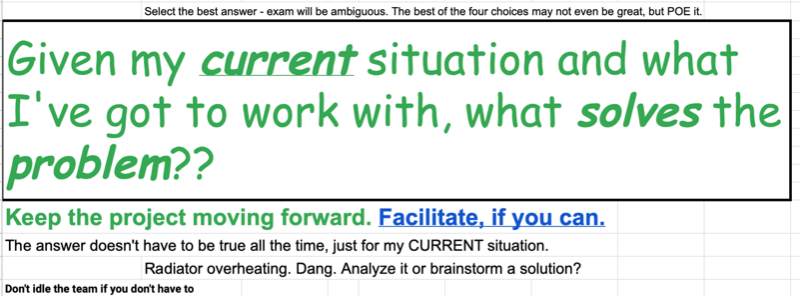Hi. As most of us know, the PMP exam is loads with short questions that have us begging for more information. Those are the hard questions. In PMI's sample test there is this question:
You're cruising along in executing and, boom, a risk crops up that wasn't found during planning. What should the PM do to handle it?
A. Brainstorm ideas with my P-team to mitigate the newbie risk.
B. Ask for some extra cash from the sponsor to handle the risk.
C. Do some data analysis for the newbie risk, to mitigate it.
D.Holler to the Stakeholders about the newb risk.
Great, we're in execution. A new risk, great.
Let's do some analysis of the newly found risk. (In fact, on a very similar Q, the answer is "Assess the risk in terms of severity of impact.")
Then we can adequately strategize on a response plan.
(Wait, is it a threat or an opportunity?)
PMI's answer is A...Brainstorm with the p-team on ways mitigate the risk. It's as if PMI is conflating 11.2, 11.3, and 11.5 into one process.
Yet in 11.2.2.2 brainstorming is used to come up with a list of risks, not a mitigation plan.
And I don't even understand why PMI is referencing 11.2; the risk has already be identified, albeit in executing.
I chose C. It can be argued that D is the best answer of the lot, because eventually that there's a new risk will be broadcasted.
Any tips on these weird questions?
Or on those other sample questions where you are in the middle of execution and the correct answer is to create a subsidiary management plan? I come out of my shoes when I see that type of questions, saying, "Wait, we're in Executing and we haven't done the subsidiary management plan yet?"
Thanks in advance.
